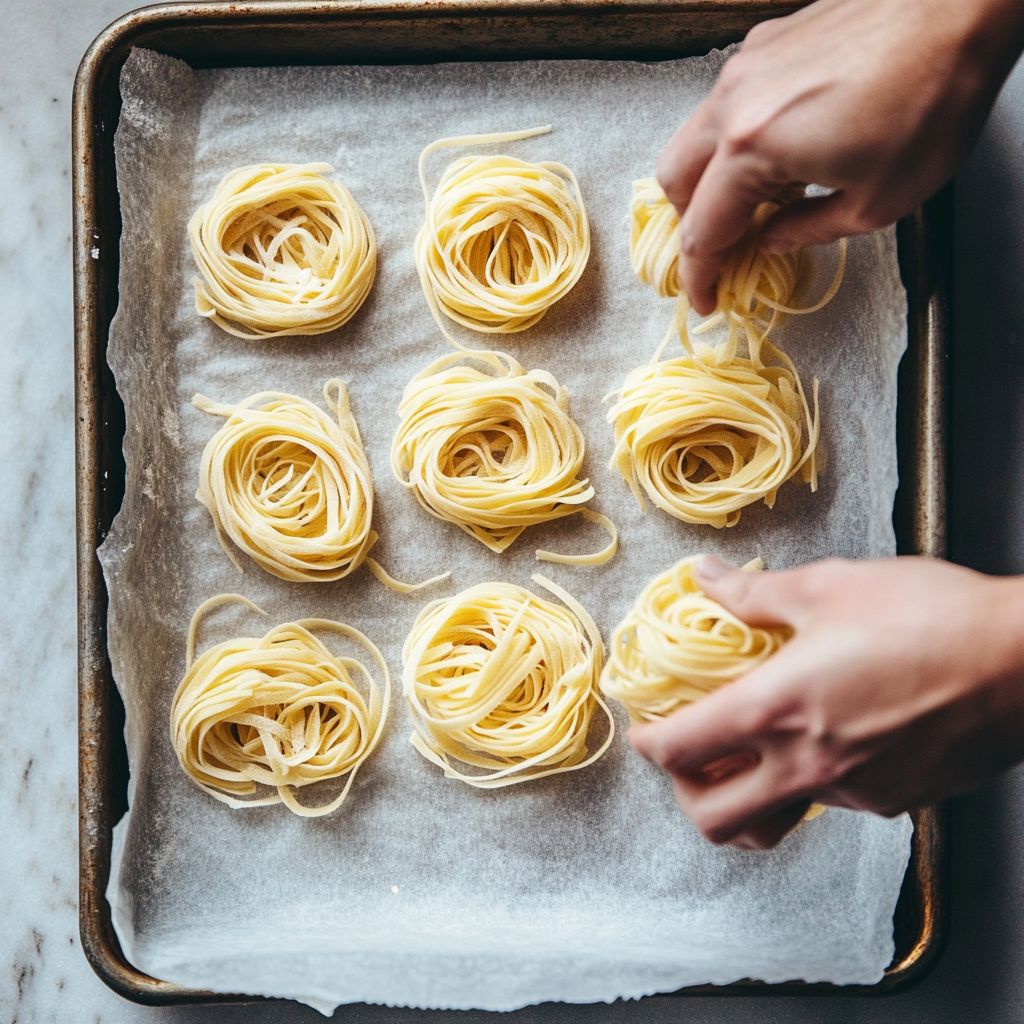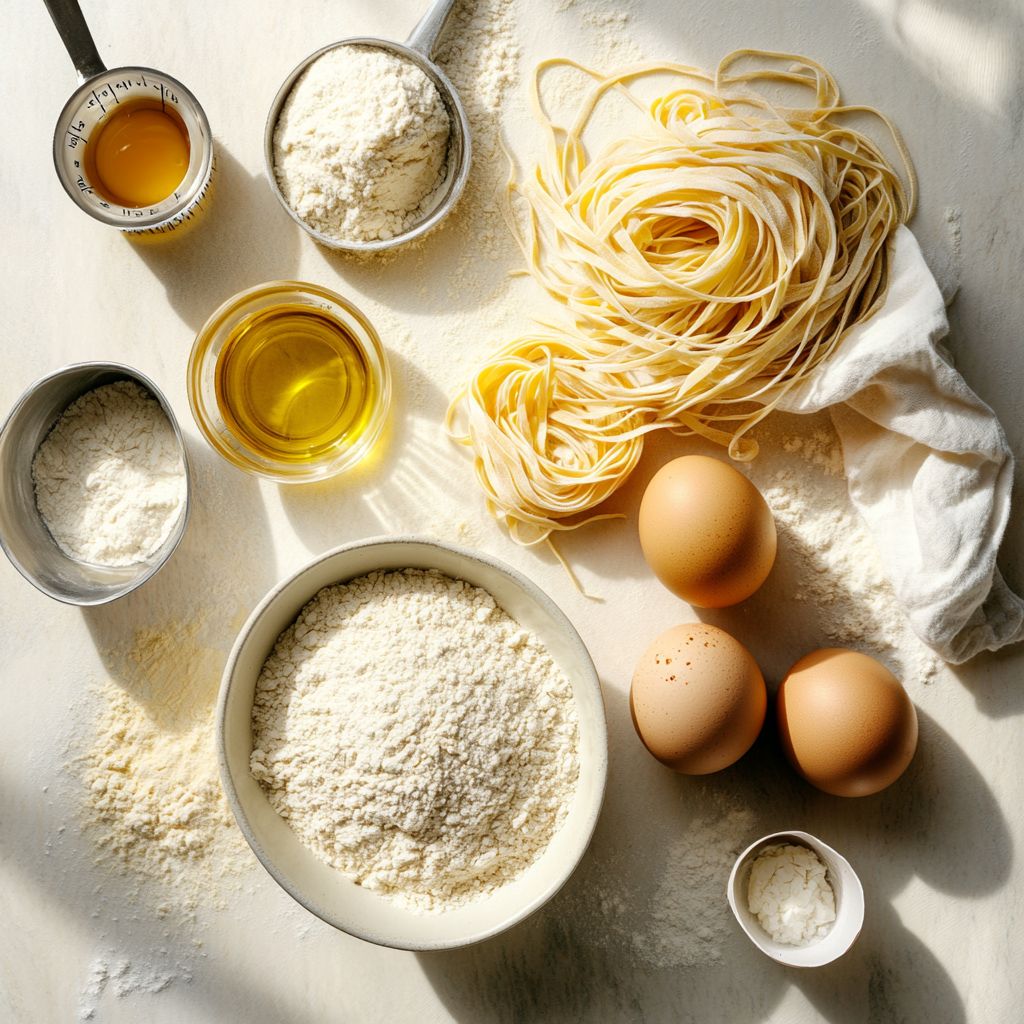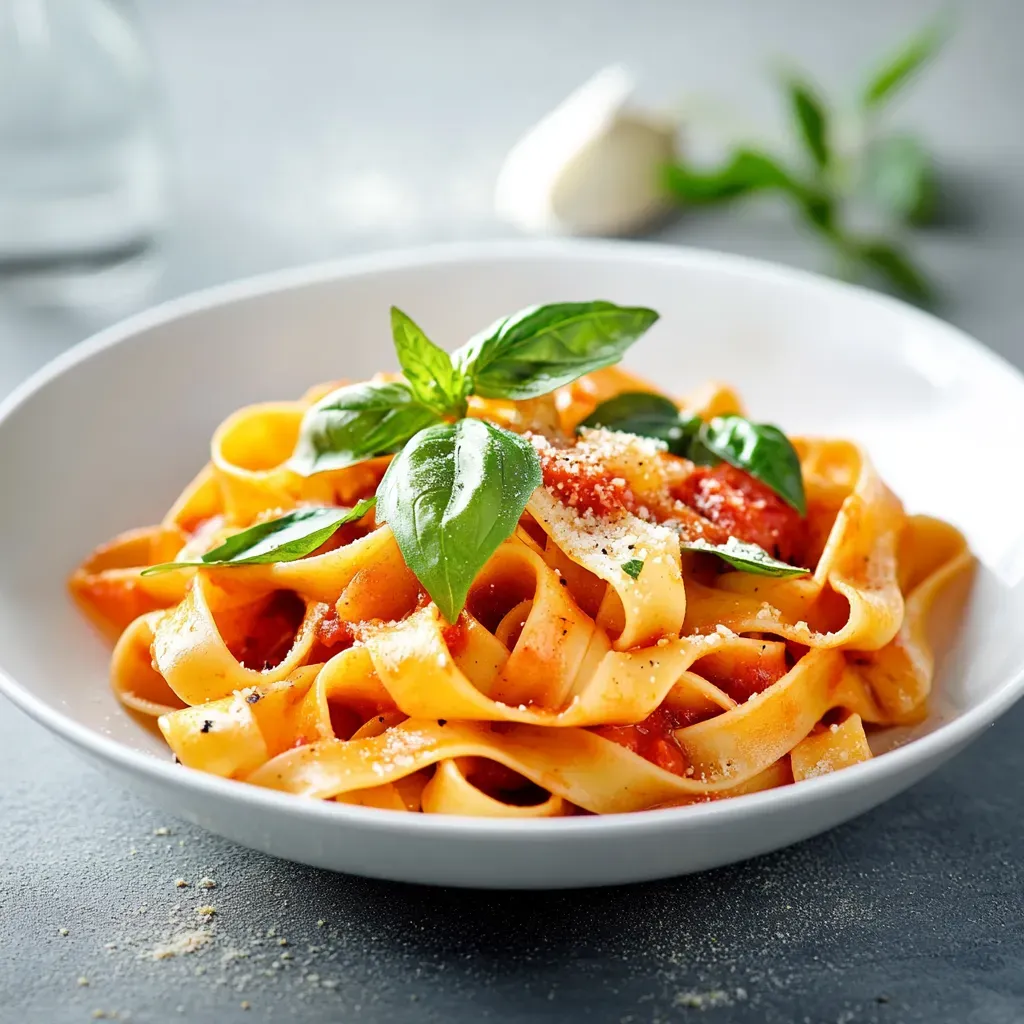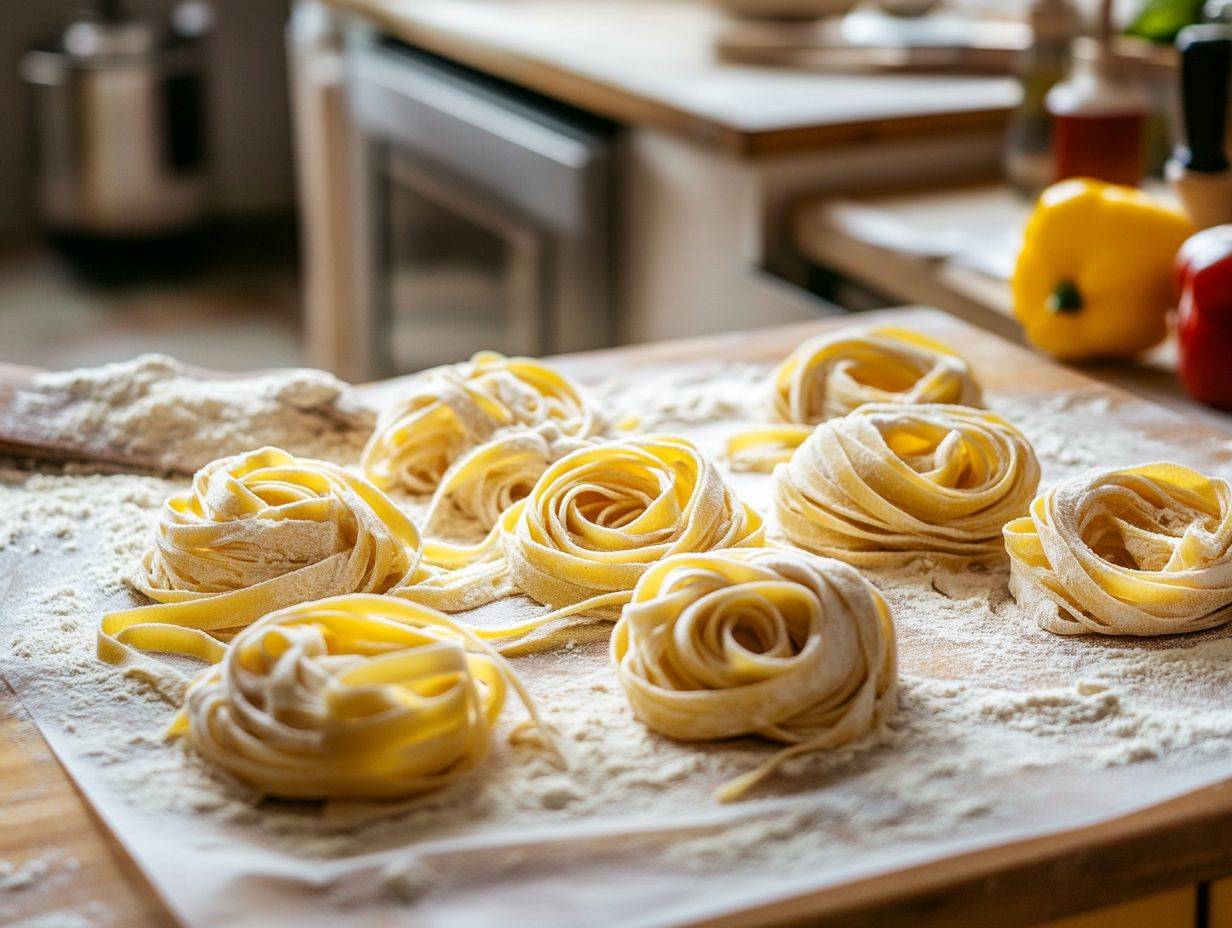
Fresh homemade pasta is one of life’s true kitchen joys—silky, rich, and full of flavor. But once you’ve rolled and cut your dough, the next big question comes up: what’s the best method for storing fresh made pasta? In this guide, we’ll explore safe, practical, and flavor-saving storage methods to keep your pasta tasting amazing—whether you’re planning to eat it later that day, tomorrow, or next month. From refrigerating to freezing and drying techniques, we’ll walk you through everything you need to know to preserve that perfect pasta texture. Let’s dig into storing fresh made pasta like a pro.
The Heart Behind Homemade Pasta Storage
A memory from Grandma’s kitchen
The first time I helped my grandmother make pasta, we ended up with flour in our hair, dough on the ceiling, and a huge tray of tagliatelle drying on the dining table. She always made extra—“in case someone drops by,” she’d say. But the key lesson? Storing fresh made pasta properly was just as important as making it. She taught me to keep it cool, dry, and carefully portioned, and that wisdom still guides me in my digital kitchen today.
Fresh pasta is delicate. Unlike dried pasta, it contains eggs and moisture that make it tender and perishable. So if you’ve made a batch at home, you’ll need to store it quickly and correctly to avoid spoilage or gummy noodles later on. Whether you’re preparing for a dinner party or planning easy weeknight meals, having storage options allows you to enjoy your pasta when you want—without compromising quality.
At AllFoody, we recommend three primary ways of storing fresh made pasta: refrigeration for short-term use, freezing for long-term storage, and air drying for pantry-style convenience. Each method has its own tricks, timeframes, and texture results, and we’ll break those down step by step. If you’ve ever wondered whether to flour your noodles, let them dry before freezing, or how long they’ll last in the fridge, we’ve got you covered.
Explore more time-saving techniques in our guide to meal prepping pasta recipes and browse our easy dinner options that pair beautifully with fresh pasta.
Keep It Fresh—Short-Term Storage in the Fridge
How to refrigerate pasta without losing its quality
When your homemade pasta is meant for dinner tonight or tomorrow, the refrigerator is your best storage option. But storing fresh made pasta takes more than just tossing it in a container. You need to protect it from moisture and sticking to preserve its texture and flavor.
First, lightly flour the pasta—semolina or all-purpose flour works fine. This thin layer prevents the strands or shapes from sticking together. Form the pasta into small nests or lay it flat on a parchment-lined baking sheet. Then, cover it loosely with plastic wrap or slide it into an airtight container.
Place it in the back of the fridge, where it stays coldest. Cook within 1 to 2 days. Beyond that, the pasta can become too soft or start to spoil. Remember, fresh pasta cooks quickly—usually in just 2 to 3 minutes—so keep an eye on it once it hits the water.
Want more quick tips like this? Explore our weeknight pasta meals or find time-saving advice in our family dinner collection.

Is drying necessary before refrigerating pasta?
A short drying time can make all the difference. Let your pasta rest on the counter for about 30 minutes before storing it in the fridge. This allows surface moisture to evaporate, keeping the dough from turning gummy. Avoid leaving it out too long—no more than an hour total, especially if your pasta contains eggs.
When storing fresh made pasta for short-term use, a combination of light drying and proper refrigeration gives you the best texture and taste. It’s a simple process that ensures your pasta stays as delicious as the moment you made it.
Freeze Your Fresh Pasta Like a Pro
Why freezing pasta is a smart kitchen strategy
Fresh pasta is amazing when served the same day—but life isn’t always that convenient. If you’ve made a big batch or want to meal prep for the week ahead, freezing is the best approach for storing fresh made pasta while keeping it flavorful and firm. It’s quick, simple, and helps you enjoy homemade quality even on your busiest nights.
Whether you’re working with noodles like linguine or filled pasta like tortellini, freezing allows you to preserve texture and taste without needing to cook everything immediately. And the best part? You can go from freezer to boiling water in minutes.
Steps to freeze fresh pasta correctly
Before freezing, lightly flour your pasta with semolina or all-purpose flour. This stops the pieces from sticking. Then, arrange the pasta on a tray lined with parchment paper. Keep it in a single layer to avoid clumps. You can shape noodles into small nests or leave short shapes spaced apart.
Flash-freeze the tray for 30 minutes. This step firms up the pasta and prepares it for long-term storage. Once solid, transfer everything to an airtight container or freezer-safe bag. Push out as much air as possible, then seal and label it with the date.
When storing fresh made pasta in the freezer, the key is keeping it airtight. This avoids freezer burn and keeps the pasta tasting fresh. You can store it safely for up to two months, though it’s best used within six weeks for the best flavor and bite.
Looking for inspiration? Explore our Italian pasta dishes or plan ahead with our freezer-friendly meal ideas.
Cooking frozen pasta the easy way
No need to defrost. Simply add frozen pasta directly into a pot of boiling salted water. It’ll cook just one or two minutes longer than fresh, depending on the shape. Be gentle when stirring to keep noodles from tearing or sticking.
For filled pasta, check doneness by slicing one open—make sure the filling is hot all the way through. Once cooked, drain and sauce as usual.
Can you freeze pasta dough too?
Absolutely. If your dough isn’t shaped yet, wrap it tightly in plastic wrap and place it inside a freezer bag. Push out the air, seal it, and freeze for up to one month. Thaw overnight in the fridge and let it sit at room temperature before rolling.
Freezing is hands-down the most flexible option for storing fresh made pasta long-term. With just a few simple steps, you can enjoy homemade pasta whenever you want—without the pressure to cook it all at once.

Ingredients
- Fresh homemade pasta
- All-purpose flour or semolina
- Airtight containers or freezer bags
- Parchment paper optional
Instructions
- 1. Dust pasta with flour to prevent sticking.
- 2. Refrigerate pasta in an airtight container for 1–2 days.
- 3. For freezing, flash-freeze on a tray, then store in bags.
- 4. To dry, air dry pasta for 12–48 hours until brittle.
- 5. Store in pantry, fridge, or freezer depending on method.
Notes
Nutrition
Drying Pasta for Room-Temperature Storage (500 words)
When drying is your best option
If you want to preserve homemade pasta without using the fridge or freezer, drying is a reliable and traditional method. For those who prefer pantry-ready meals or simply don’t have freezer space, drying offers a shelf-stable way of storing fresh made pasta for weeks—sometimes even months.
This method works best for long-cut noodles like spaghetti, fettuccine, or tagliatelle, and also for small shapes like farfalle or orecchiette. Stuffed pasta, however, is not ideal for drying, as fillings can spoil or change texture over time.
How to dry fresh pasta properly
Start by spreading your shaped pasta out on a clean surface lined with a floured kitchen towel or parchment paper. For best airflow, use a pasta drying rack or a baking tray with a cooling rack on top. Keep the pieces from touching—air circulation is crucial.
Let the pasta air dry for at least 12 hours, but depending on humidity, it could take up to 48 hours. Flip the pasta occasionally to ensure even drying. You’ll know it’s fully dry when it snaps easily, like uncooked spaghetti from a box. If it bends instead of breaking, it needs more time.
Once dried, transfer the pasta to an airtight container or a resealable jar. Label it with the date, and store it in a cool, dark place like a pantry or cupboard. Properly dried pasta can last up to two months without losing quality.
Want to keep learning traditional methods? Check out our Italian cooking tips and explore pantry-friendly pasta dishes for more timeless inspiration.
Is drying before storing always necessary?
Not always—but it can be very useful. A quick 30-minute dry before refrigerating or freezing helps reduce excess moisture, which prevents sticking and extends texture quality. But for long-term, shelf-stable storage, fully drying pasta is a must.
Drying is particularly helpful if you like making large batches of pasta in advance. By taking the time to dry it properly, you create your own ready-to-use, artisan-style pasta right from your kitchen counter. It’s one of the simplest techniques for storing fresh made pasta without modern appliances.

Safety tips when storing dried pasta
Once dried, pasta is no longer perishable—but that doesn’t mean you can ignore storage conditions. Always use airtight containers to protect against moisture and pests. Never store dried pasta near a heat source or in direct sunlight. Temperature swings and humidity are your worst enemies.
Check the pasta before cooking. If it feels soft, sticky, or has signs of mold, discard it. Otherwise, dried pasta is a low-maintenance and safe option that brings homemade quality to your pantry shelf.
When done right, drying becomes the most hands-off method for storing fresh made pasta. It’s old-school, but still effective. And for pasta lovers who crave both convenience and tradition, it’s a beautiful solution.
How long can you keep fresh homemade pasta in the fridge?
Fresh homemade pasta will stay good in the fridge for up to 2 days if stored properly. After shaping it, dust the pasta with flour, then place it in an airtight container or wrap it in plastic. Store it in the coldest part of your fridge. Be sure to cook it before it becomes too soft or sticky. If you’re not planning to use it that soon, freezing or drying might be better options. For more help with meal timing, see our easy weeknight dinners.
Can you freeze fresh homemade pasta?
Yes, freezing is one of the most reliable ways of storing fresh made pasta for long-term use. Lightly flour the pasta to prevent sticking, then flash-freeze it on a tray before transferring to a sealed freezer bag. You can store it for up to two months. When ready to cook, don’t thaw it—just drop it straight into boiling water. This method works well for most shapes, including noodles and filled varieties. Want more storage tips? Try our freezer-ready pasta recipes.
Should fresh pasta be dried before storing?
Drying your pasta before storing it can make a big difference, especially if you plan to freeze or refrigerate it. A short drying period of 30 minutes helps remove surface moisture and prevents sticking. For room-temperature storage, pasta must be fully dried until it snaps. This process can take 12 to 48 hours depending on humidity. Always store dried pasta in airtight containers to keep it safe and fresh.
How do you store fresh pasta overnight?
To store fresh pasta overnight, flour it lightly and place it in an airtight container in the refrigerator. Avoid plastic wrap alone—it traps too much moisture. Let the pasta dry for 20 to 30 minutes before refrigerating to help it maintain texture. Use it within 24 to 36 hours for the best results. If you’re unsure you’ll use it that soon, freezing is a safer choice for maintaining quality.
Conclusion: Pasta That Stays Perfect — Any Day, Any Way
Whether you’re making a single serving of tagliatelle or preparing a weekend batch of ravioli, how you store your pasta matters just as much as how you cook it. From refrigeration and freezing to traditional air drying, you now have reliable methods for storing fresh made pasta to match your timeline and cooking style.
At AllFoody, we believe that great food should be both simple and satisfying. With these techniques, you’ll reduce waste, save time, and always have homemade pasta ready to go—fresh, flavorful, and exactly the way you want it.
For even more time-saving recipes and tips, explore our pasta collection or browse pantry-friendly ideas for inspiration.

